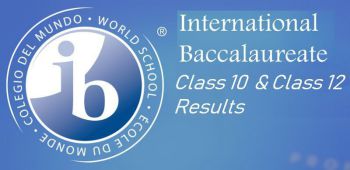The course in Accountancy has been introduced at +2 stage of Senior Secondary education, as formal commerce education is provided after first ten years of schooling. With the fast changing economic scenario and business environment in a state of continuous flux, elementary business education along with accountancy as the language of business and as a source of financial information has carved out a place for itself at the Senior School stage. Its syllabus content should give students a firm foundation in basic accounting principles and methodology and also acquaint them with the changes taking place in the presentation and analysis of accounting information, keeping in view the development of accounting standards and use of computers.
In class XII, Accounting for Partnership Firms and Companies are to be taught as a compulsory part. Also, there shall be a further understanding about Computerized Accounting System, as an optional course to Analysis of Financial Statements.
|
Units |
Chapters |
Marks |
|
Part A |
Accounting for Partnership Firms and Companies |
|
|
|
Unit 1. Accounting for Partnership Firms |
35 |
|
|
Unit 2. Accounting for Companies |
25 |
|
|
|
60 |
|
Part B |
Financial Statement Analysis |
|
|
|
Unit 3. Analysis of Financial Statements |
12 |
|
|
Unit 4. Cash Flow Statement |
8 |
|
|
|
20 |
|
Part C |
Project Work |
20 |
|
|
OR |
|
|
Part B |
Computerized Accounting |
|
|
|
Unit 3. Computerized Accounting |
20 |
|
Part C |
Practical Work |
20 |
Details of topics and sub-topics to be covered in each unit
Part A: Financial Accounting - I
Unit 1: Accounting for Partnership Firms
Partnership: features, Partnership Deed.
Provisions of the Indian Partnership Act 1932 in the absence of partnership deed.
Fixed v/s fluctuating capital accounts. Preparation of Profit and Loss Appropriation account- division of profit among partners, guarantee of profits.
Past adjustments (relating to interest on capital, interest on drawing, salary and profit sharing ratio).
Goodwill: nature, factors affecting and methods of valuation - average profit, super profit and capitalization.
Note: Interest on partner's loan is to be treated as a charge against profits.
Accounting for Partnership firms - Reconstitution and Dissolution.
Change in the Profit Sharing Ratio among the existing partners - sacrificing ratio, gaining ratio, accounting for revaluation of assets and reassessment of liabilities and treatment of reserves and accumulated profits. Preparation of revaluation account and balance sheet.
Admission of a partner - effect of admission of a partner on change in the profit sharing ratio, treatment of goodwill (as per AS 26), treatment for revaluation of assets and reassessment of liabilities, treatment of reserves and accumulated profits, adjustment of capital accounts and preparation of balance sheet.
Retirement and death of a partner: effect of retirement / death of a partner on change in profit sharing ratio, treatment of goodwill (as per AS 26), treatment for revaluation of assets and reassessment of liabilities, adjustment of accumulated profits and reserves, adjustment of capital accounts and preparation of balance sheet. Preparation of loan account of the retiring partner.
Calculation of deceased partner’s share of profit till the date of death. Preparation of deceased partner’s capital account, executor’s account and preparation of balance sheet.
Dissolution of a partnership firm: types of dissolution of a firm. Settlement of accounts -preparation of realization account, and other related accounts: capital accounts of partners and cash/bank a/c (excluding piecemeal distribution, sale to a company and insolvency of partner(s)).
Note:
(i) The realized value of each asset must be given at the time of dissolution.
(ii) In case, the realization expenses are borne by a partner, clear indication should be given regarding the payment thereof.
Unit-2 Accounting for Companies
Accounting for Share Capital
Share and share capital: nature and types.
Accounting for share capital: issue and allotment of equity shares, private placement of shares, Employee Stock Option Plan (ESOP). Public subscription of shares - over subscription and under subscription of shares; issue at par and at premium, calls in advance and arrears (excluding interest), issue of shares for consideration other than cash.
Accounting treatment of forfeiture and re-issue of shares.
Disclosure of share capital in company’s Balance Sheet.
Accounting for Debentures
Debentures: Issue of debentures at par, at a premium and at a discount. Issue of debentures for consideration other than cash; Issue of debentures with terms of redemption; debentures as collateral security-concept, interest on debentures.
Redemption of debentures: Lump sum, draw of lots and purchase in the open market (excluding ex interest and cum-interest). Creation of Debenture Redemption Reserve.
Conversion method
Note: Related sections of the Indian Companies Act, 2013 will apply.
Part B: Financial Statement Analysis
Unit 3: Analysis of Financial Statements
Financial statements of a company: Statement of Profit and Loss and Balance Sheet in the prescribed form with major headings and sub headings (as per Schedule III to the Companies Act, 2013).
Note: Exceptional items, extraordinary items and profit (loss) from discontinued operations are excluded.
- Financial Statement Analysis: Objectives, importance and limitations.
- Tools for Financial Statement Analysis: Comparative statements, common size statements, cash flow analysis, ratio analysis.
- Accounting Ratios: Objectives, classification and computation.
Liquidity Ratios: Current ratio and Quick ratio.
Solvency Ratios: Debt to Equity Ratio, Total Asset to Debt Ratio, Proprietary Ratio and Interest Coverage Ratio.
Activity Ratios: Inventory Turnover Ratio, Trade Receivables Turnover Ratio, Trade Payables Turnover Ratio and Working Capital Turnover Ratio.
Profitability Ratios: Gross Profit Ratio, Operating Ratio, Operating Profit Ratio, Net Profit Ratio and Return on Investment.
Note: Net Profit Ratio is to be calculated on before and after tax.
Unit 4: Cash Flow Statement
Meaning, objectives and preparation (as per AS 3 (Revised) (Indirect Method only)
Note:
(i) Adjustments relating to depreciation and amortization, profit or loss on sale of assets including I investment, dividend (both final and interim) and tax.
(ii) Bank overdraft and cash credit to be treated as short term borrowings.
(iii) Current Investments to be taken as Marketable securities unless otherwise specified.
Part C: Project Work
Please refer to the guidelines published by CBSE.
OR
Part B: Computerised Accounting
Unit 3: Computerised Accounting
Overview of Computerised Accounting System.
- Introduction: Application in Accounting.
- Features of Computerised Accounting System.
- Structure of CAS.
- Software Packages: Generic; Specific; Tailored.
Accounting Application of Electronic Spreadsheet.
Concept of electronic spreadsheet.
Features offered by electronic spreadsheet.
Application in generating accounting information - bank reconciliation statement; asset accounting; loan repayment of loan schedule, ratio analysis.
Data representation - graphs, charts and diagrams.
Using Computerized Accounting System.
Steps in installation of CAS, codification and Hierarchy of account heads, creation of accounts.
Data: Entry, validation and verification.
Adjusting entries, preparation of balance sheet, profit and loss account with closing entries and opening entries. Need and security features of the system.
Database Management System (DBMS)
Concept and Features of DBMS.
DBMS in Business Application.
Generating Accounting Information - Payroll.
Part C: Project Work
Please refer guidelines published by CBSE.
Prescribed books
- Accountancy – I Class XII NCERT Publication
- Accountancy – II Class XII NCERT Publication
3. Guidelines for Project work in Accounting and Practical work in Computerised Accounting Class XII CBSE Publication.



















Comments